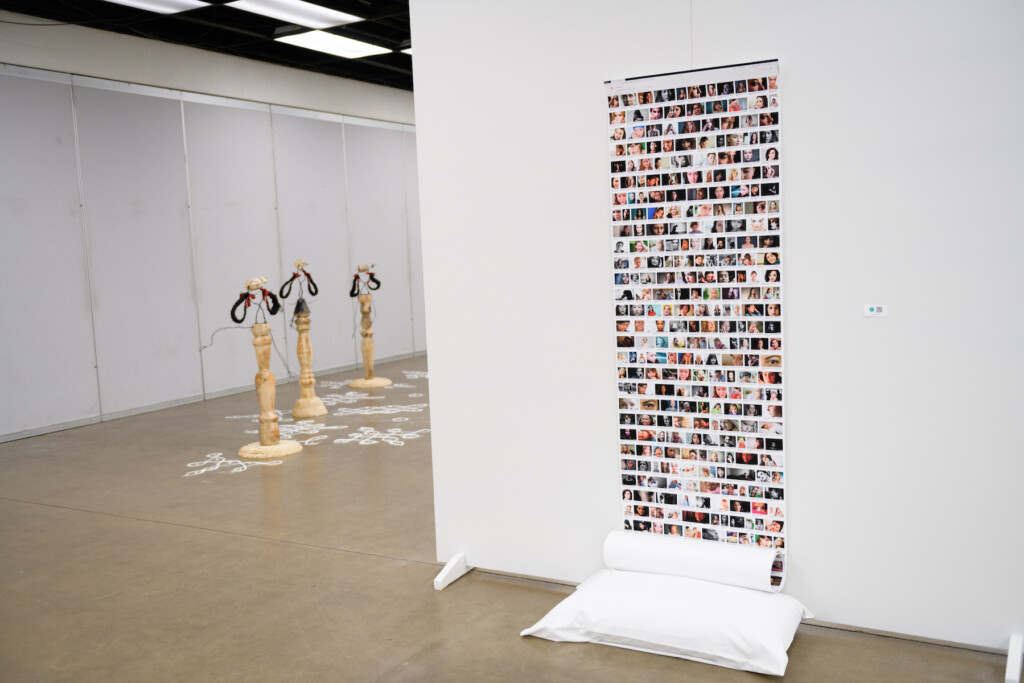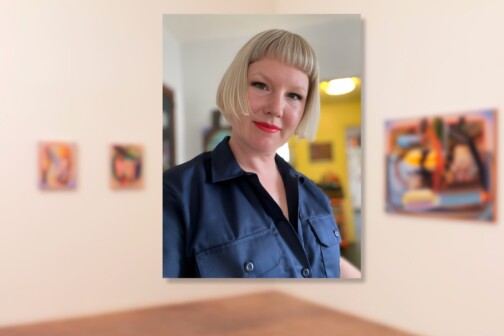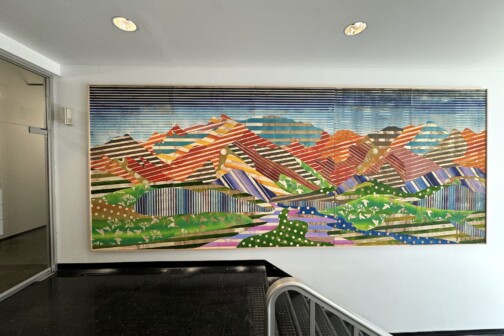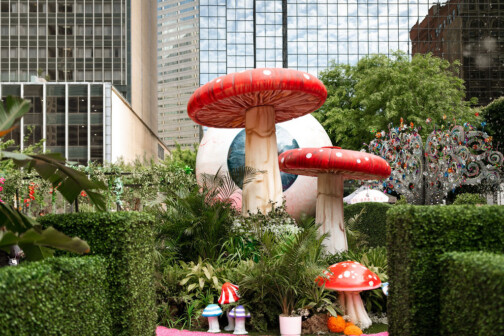Last month, the largest women’s art fair in Texas launched inside Dallas Market Hall. The fourth edition of the Vignette Art Fair brought 54 artists from across the state to Dallas. After a postponement due to the pandemic, the art fair returned to a post-Roe America, at a time when women’s rights are under intense debate and scrutiny by both the courts and politicians, particularly within this state.
Organizers of this year’s fair said they sought to give Texas women an opportunity to to express themselves through their visual art. Under the curation of legendary Dallas artist Vicki Meek, who is also a longtime activist and organizer, this year’s Vignette Art Fair rose to the occasion in addressing what’s happening outside the walls of the gallery.
The fair is typically held at The Women’s Museum in Fair Park, a meaningful space whose historic architecture provided a feeling of warmth. This year’s fair was hosted at the Dallas Market Hall, a roomy space drenched in light that created the feel of a gallery.
Near the entrance, visitors were greeted by a contemporary oil painting of a seated woman in five transitional scenes. The artist, Victoria Brill, painted each scene on a single canvas. The women transition further away, growing smaller. Within each scene, a different part of the woman’s body is replaced with vibrant colored strokes that outline the contours of where their limbs once were.
Local gallery owners like Daisha Board of Daisha Board Gallery and Dr. Valerie Gillespie of Pencil on Paper Gallery walked through slowly, looking at the art. All of the women in the room appeared to be familiar with one another, further highlighting the mission of the exhibit.
“Women are not purchased by collectors as often, featured in galleries as often, they’re not in museum collections as often,” said Emma Vernon, the event’s development chair. “We’re trying to take that rival talent that we have in Texas and showcase that.”
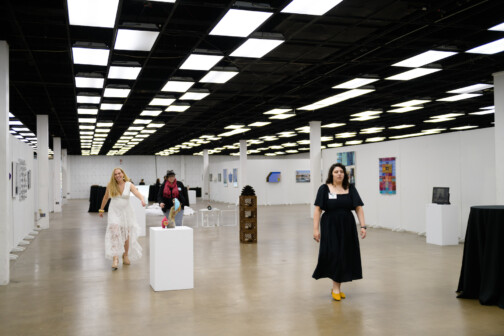
Many attendees are no longer based in Texas but returned to support the art community they started in. They found comfort mingling around sculptures like a large bed occupied with a papier-mache body in the middle of the room or a casual table with fake pills spilled all over.
Before giving a tour, Meek introduced herself by explaining that her contribution to the show was to bring together different racial, cultural, and ethnic backgrounds. It was an introduction to artists who sought to define the representation of their heritage and womanhood. She emphasized that she does not know any of these artists personally and has no familiarity with their past, which is why she was excited to jury.
“I’m interested in art that is interesting. The first thing is, they had to make me look at it,” Meek said. “The hardest thing for an artist to achieve is work that is theirs alone, given how difficult it is to be devoid of outside influences.”
Kirupa Sargunaraja, a master’s student at the University of North Texas, took up a whole section of the room. Her piece, Kuthu Vizhakkugal, was an eye-catching depiction of a lost childhood replaced with high expectations for adolescent girls in Indian culture. She used wood, wire, hair, flour, and grease to make interactive floor mats that forced the viewer to learn something new through the details.
The Vignette Art Fair brought Texas women together to support each other in their most comfortable environment. At the end of the day, we came together to celebrate the art that was intimately shared.
Photography by Sheryl Lanzel, whose work can be found here.
Get the FrontRow Newsletter
Author



